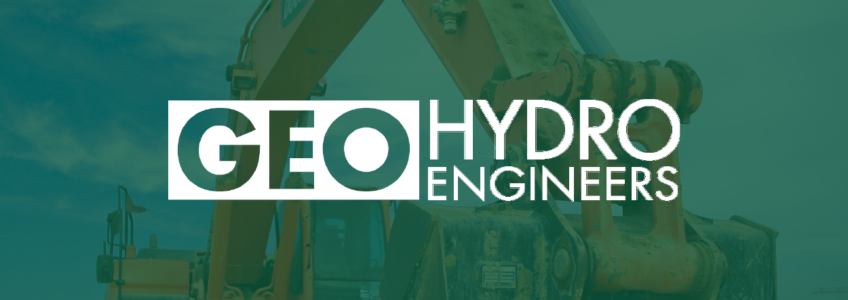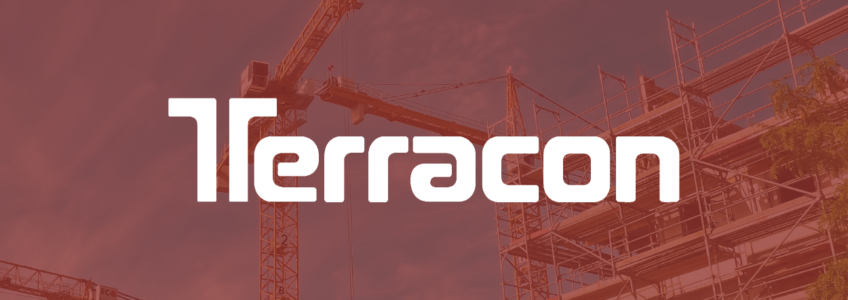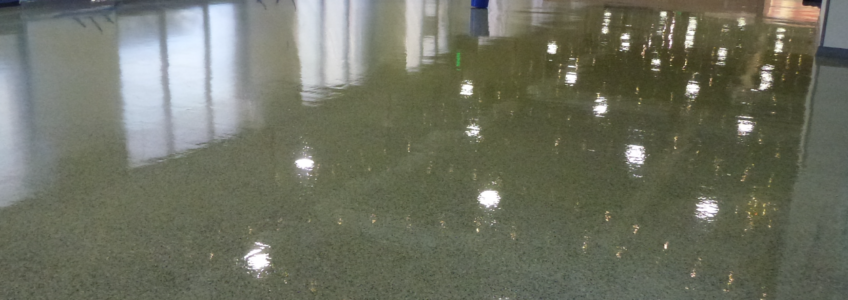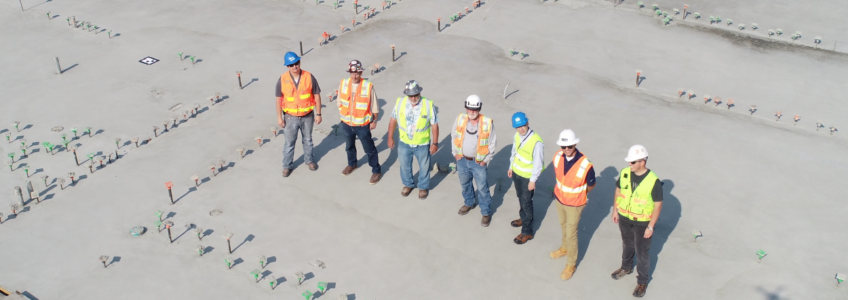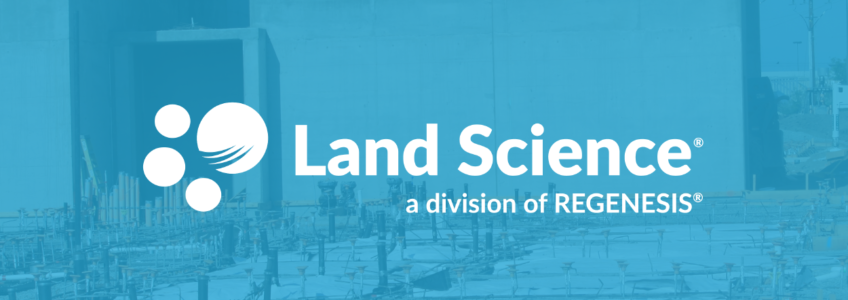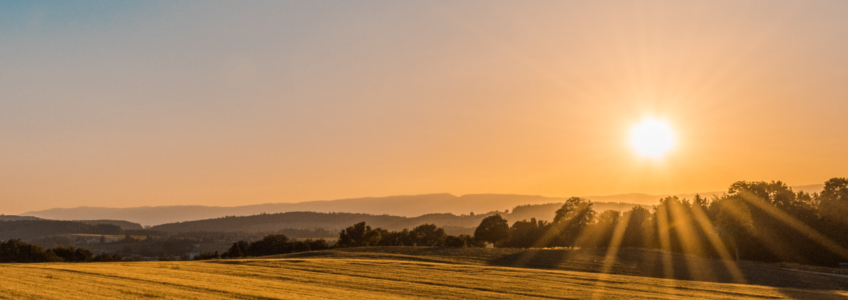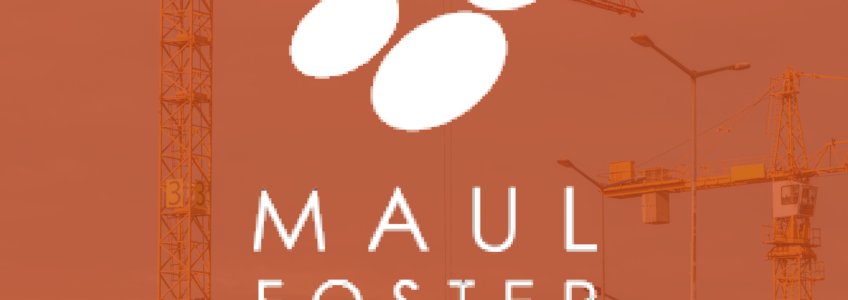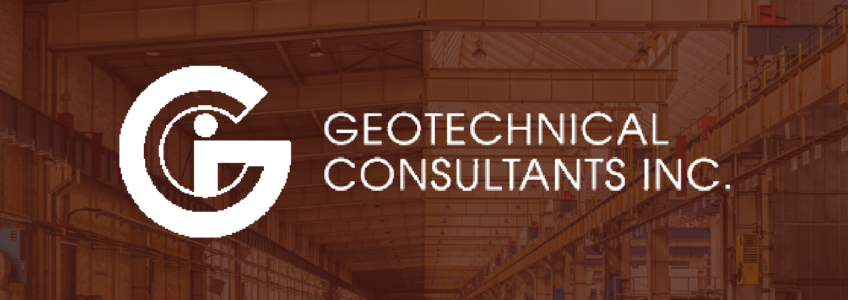Client Spotlight: Jarrett Baggett, Environmental Services Director for Geo-Hydro Engineers, Inc.
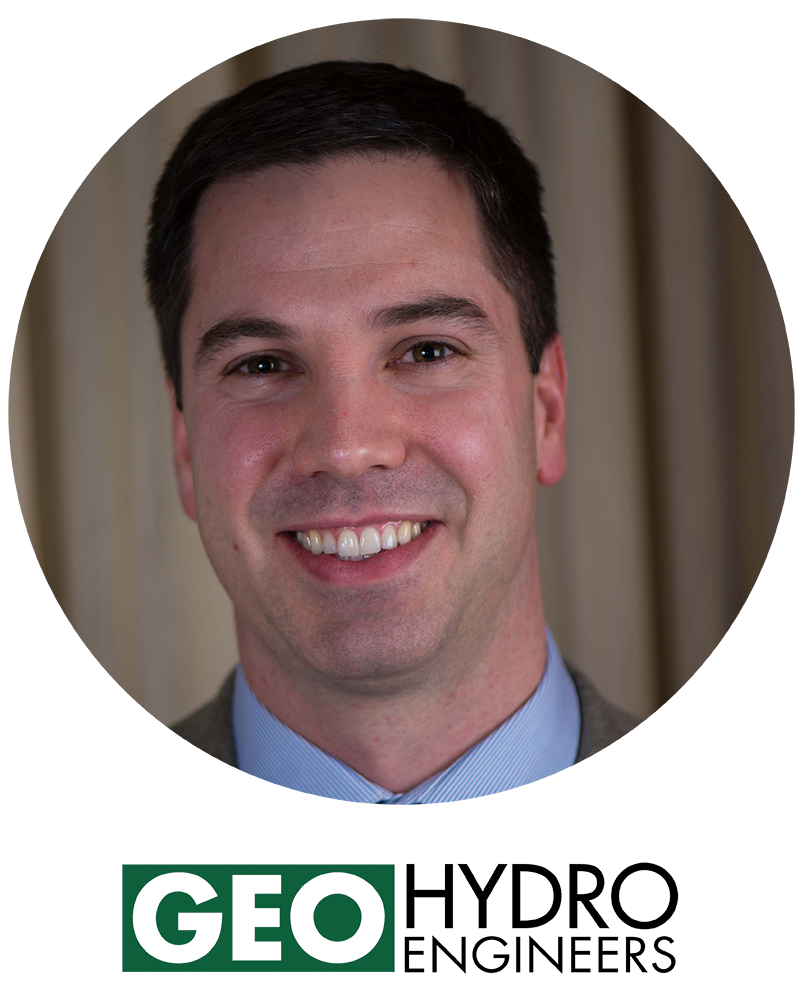
For Jarrett Baggett, Environmental Services Director for Geo-Hydro Engineers, Inc., a leading environmental consulting and engineering firm and valued Land Science® client, growing up on a dairy farm instilled a deep affection for our environment. An affection that ultimately would lead to his professional vocation where he could make a difference on behalf of our planet. “I loved the outdoors growing up,” Baggett shares. “I knew I needed to choose a career that would allow me to spend time outdoors. Although I was initially unsure of what I wanted to major in for college, I knew I wanted to do something related to the environment.” In a career which has seen him advance up the ranks from a Jr. Geologist to Staff Professional, then Project Manager, and finally to his current position as a Director at Geo-Hydro Engineers, Baggett can reflect on his work, and look forward, knowing he is indeed making an impact. He shares, “To see a property go from a dilapidated eyesore that poses potential risks to the community, to a property that can be utilized and enjoyed by all as a result of your hard work is very rewarding.” In his current role with Geo-Hydro Engineers, Baggett is responsible for the Environmental operations at the company, which includes managing environmental projects and maintaining interaction with clients, personnel, and regulatory agencies. He continues, “I oversee a group of engineers, geologists, and environmental scientists performing environmental studies in the industrial, commercial, agricultural, and real estate sectors. Our clients include owners (private and public), industry, developers, banks, architects, structural engineers, and contractors just to name a few.”
Baggett prepared himself for a career in environmental management by earning his B.S. degree in Geology from the University of Tennessee, Knoxville. He shares, “I took some Geology classes and thoroughly enjoyed them. The coursework, coupled with my love for the environment, soon led to me earning my geology degree.” To stay abreast of trends in his field, he takes continuing education coursework to fulfill requirements for his P.G. license, which he holds in several states. In addition, he attends seminars and conferences to keep up with the latest technologies, standards and regulations that are relevant to the industry. When asked why he enjoys working with Land Science®, he points to the company’s reputation for developing advanced solutions that are capable of addressing today’s environmental challenges. He shares, “Land Science® reached out to us and came by to present some of their tech products and capabilities. The team was extremely knowledgeable, especially with regard to the vapor intrusion industry. Seeing a rising need for vapor mitigation in real estate development, I knew it was just a matter of time before we would have the need to apply some of the Land Science® products to our sites. That need arrived, and we are now placing over 100,000 square feet of GeoSeal® with Vapor-Vent™ at a mixed-use development at a site along the Atlanta Beltline. We looked at several products, but really liked the GeoSeal® product with its combination of HDPE and asphalt/latex layers that provide an effective and durable product for vapor mitigation. Land Science® has been very helpful in making sure the design process, pricing details, and application process went smoothly.”
Residing in Roswell, GA, where he lives with his wife and two children, Baggett primarily works out of his firm’s Kennesaw, GA, office. When asked about the goals of Geo-Hydro Engineers, he quickly points to continued growth. “We have seen substantial growth throughout the company over the past five years,” he says. “We have opened two new offices over the past two years and started a new environmental branch in our Charlotte, NC office this past year. In the near future we are looking to expand our environmental services, add new employees, and continue to grow revenue.” In addition, he recognizes the challenges his work entails, and strives to avoid over-extending himself in an effort to maintain his high quality of work. He shares, “It’s easy to try and take on more and more project work. But once you over extend yourself your dedication to each project tends to slip. For me, there’s a constant balance of knowing your limitations, knowing when to hire more personnel, and when to reach out for help. Although as a company we are always trying to grow and exceed expectations, our ultimate responsibility and duty is to provide quality products to our clients.” Outside of work, Baggett enjoys fishing and spending time with family and friends. He also finds time to work in his yard. He shares, “Although I don’t live on the family farm anymore, I do enjoy working in the yard. My wife jokes that this is my substitute for not working on a farm anymore, and that I tend to our yard like it’s a farm crop.”
When it comes to how he has seen the industry evolve over the years, Baggett says he’s observed that many developers have changed their views regarding treatment plans of environmentally impacted sites. He’s especially noticed how today’s new technology is making an impact. He shares, “We work with a lot of commercial developers, and over the last five to ten years, we have seen many of these developers change their views on environmentally impacted sites. They have educated themselves on the latest environmental technologies and programs provided by their states, and are taking advantage of these. They’re now embracing these sites and working with environmental consultants to remediate and develop properties once thought to be undevelopable. Another aspect is the advancement in technologies. For instance, with the vapor intrusion issues that have come to light in the last ten or more years, vapor mitigation products like GeoSeal®, Vapor Vent™, and RetroCoat™ have improved and become more cost effective to install, allowing for more efficient renovations and development of properties.” And how would he encourage others to join in his field of study? He concludes, “I would first encourage people to find something they enjoy. No matter what you do, you are going to have to work hard to be successful, so if you enjoy it, it makes working hard a lot easier. If that something might be environmental work, I would then ask them if they like solving complex problems with innovative ideas and solutions. If so, then the environmental field may be for you. As a said before, it is very gratifying to see a project you were a part of become something that can be enjoyed by many.”
REGENESIS and Land Science® is proud to have Jarrett Baggett, Environmental Services Director for Geo-Hydro Engineers, Inc., as a valued client and partner in environmental remediation, and appreciates his dedication and creative approach in providing successful remediation outcomes for REGENESIS and its clients.
Client Spotlight: Matt Hall, Senior Engineer and Senior Project Manager at Terracon Consultants, Inc.
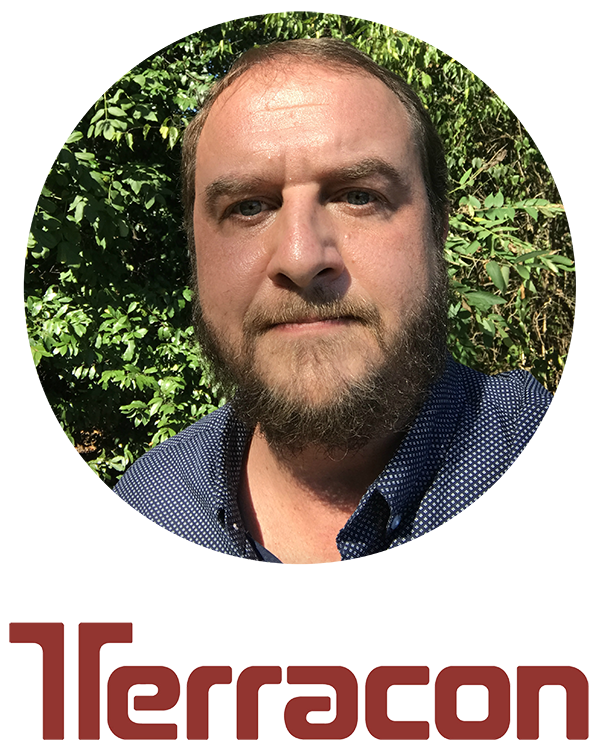 For Matt Hall, Senior Engineer and Senior Project Manager at Terracon Consultants, Inc., a leading environmental consulting and engineering firm and valued REGENESIS client, choosing a career in environmental remediation started with an interest in cleaning up our environment., Once he became immersed in his studies however, he quickly became passionate about the “how-to” aspects that drive the science behind remediation. Shares Hall, “My initial interest soon morphed into a fascination with understanding the science behind the products and the engineering design for remediation implementation.” Eventually, Hall’s commitment to the earth’s environment lead to earning a dual bachelor’s degree from Tulane University in Ecology, Evolution, & Organismal Biology (EEOB), and Environmental Studies. After graduation, he worked as a staff level professional at an environmental engineering firm and worked his way up the ranks before joining Terracon, seven years ago, where he enjoys a diverse range of responsibilities. He continues, “I manage a wide variety of projects near my home office in Tennessee, but also provide support for vapor related projects across the country. The national work includes consultation regarding vapor intrusion, design of vapor mitigation systems, and ongoing operations and testing of these systems.” It’s a role Hall enjoys, from both a collaborative and long-term perspective. He continues, “I enjoy the people that I work with, and I continue to take satisfaction from helping Terracon become a national leader in the vapor intrusion and mitigation world.”
For Matt Hall, Senior Engineer and Senior Project Manager at Terracon Consultants, Inc., a leading environmental consulting and engineering firm and valued REGENESIS client, choosing a career in environmental remediation started with an interest in cleaning up our environment., Once he became immersed in his studies however, he quickly became passionate about the “how-to” aspects that drive the science behind remediation. Shares Hall, “My initial interest soon morphed into a fascination with understanding the science behind the products and the engineering design for remediation implementation.” Eventually, Hall’s commitment to the earth’s environment lead to earning a dual bachelor’s degree from Tulane University in Ecology, Evolution, & Organismal Biology (EEOB), and Environmental Studies. After graduation, he worked as a staff level professional at an environmental engineering firm and worked his way up the ranks before joining Terracon, seven years ago, where he enjoys a diverse range of responsibilities. He continues, “I manage a wide variety of projects near my home office in Tennessee, but also provide support for vapor related projects across the country. The national work includes consultation regarding vapor intrusion, design of vapor mitigation systems, and ongoing operations and testing of these systems.” It’s a role Hall enjoys, from both a collaborative and long-term perspective. He continues, “I enjoy the people that I work with, and I continue to take satisfaction from helping Terracon become a national leader in the vapor intrusion and mitigation world.”
Working with Land Science to Solve Vapor Intrusion Challenges
When it comes to working with REGENESIS and its vapor Intrusion division, Land Science, Hall appreciates the company’s vast array of available products and solutions and knowing their solutions have been researched and proven to be successful in the field. “REGENESIS offers a solid stable of products, and they’ve put the resources into testing those products,” shares Hall. “We’ve had a number of occasions where we were trying to iron out grey areas in a spec, and REGENESIS stepped up to provide documentation that saved the day.” While Terracon Consultants, Inc. uses a variety of REGENESIS products, Hall himself is particularly involved with their vapor mitigation products, such as Geo-Seal®, which is marketed under the company’s Land Science® division. When asked what he considers the best part of his job, Hall points to the day-to-day aspects of providing the most effective solutions for his clients. “I enjoy solving difficult challenges, along with brainstorming and collaborating with some exceptional minds at Terracon. I also appreciate is the opportunity to mentor younger staff.” It’s this aspect of working with young environmental engineers that Hall feels will help Terracon Consultants, Inc. continue to thrive in the years ahead. He shares, “Terracon’s mission is to deliver success for our employees, clients, and communities. It’s been awesome to watch each of these materialize over the past several years.” An employee-owned company, Terracon Consultants, Inc. provides environmental, facilities, geotechnical, and materials services throughout the U.S., and includes over 4,000 employees in more than 140 offices, enabling the firm to provide state-of-the-art services in all 50 states. The company is currently ranked 24th on Engineering News-Record’s ENR list of Top 500 Design Firms.
Originally from Tennessee, Hall began his career while living in the San Francisco Bay Area, before relocating back to Tennessee to join Terracon Consultants, Inc. He lives in Nashville, and as one might guess, loves music, especially live music. He continues, “I’m a big fan of music, and I’m active in the rock and pop scene here in Nashville. And yes, there is a lot more than just country music in Nashville! I’m also an avid homebrewer, and probably spend more weekends than I should tinkering with brewing and fermentation equipment.” To stay current in his field of study, Hall regularly attends company-sponsored events through Terracon Consultants, Inc., which often includes panel or roundtable discussions. He shares, “We have practice resource groups (PRGs) within Terracon, which consist of some of our top engineers and geologists in specific sectors of the environmental practice. I chair the Vapor PRG, and am a member of the Remediation PRG. These meetings are often a forum where we share new information that we may have learned from conferences, presentations, publications, webinars, regulators, or the “school of hard knocks”, from our own unique experiences.”
The Future of Remediation and Vapor Intrusion Technologies
When asked what he sees for the future of environmental remediation, Hall feels the burden of culpability and accountability within the industry may be casting a long shadow. “I’m concerned that it is going to be less about science, and more about liability protection in the future. It’s also going to be very interesting to see how the emerging contaminants today (PFAS, PFOA) play out in the municipal water supplies. Something that prevalent in our society is going to be hard to clean up to the levels that the risk-based models are generating.” He also feels the industry will need to adapt to new pollutants and toxins in the future. “I’ll be watching to see what happens with emerging contaminants in the coming years, and how the industry as a whole addresses it. From a soil and groundwater perspective, I think we’re going to start to see more risk-based closures with land use restrictions, including vapor mitigation systems. From a vapor perspective, I think we are going to see more innovation in the testing, operations and maintenance side of mitigation systems.” And what suggestions would he have for those considering a career in his industry? “Find a good mentor and really listen to them. There are few out there that have taught me immeasurable amounts just from having the opportunity to work with them. Listening is key. I’d also suggest a dose of humility with clients. I’ve seen too many of my peers try to tell the client what they need, when oftentimes the client is calling to tell you what they need. And lastly, you’ve got to love to learn, and learn from every failure. We often work in an environment where we can’t see what’s below the ground, so things are going to happen that you don’t expect. It takes time to build up a repertoire of enough failures to make you a great remediation engineer.”
REGENESIS is proud to have Matt Hall, Senior Engineer and Senior Project Manager at Terracon Consultants, Inc., as a valued client and partner in environmental remediation, and appreciates his wealth of knowledge and diverse contributions in making a difference in successful remediation outcomes for REGENESIS and its clients.
When to Use Continuous Monitoring to Resolve Vapor Intrusion Challenges
Several common questions arise when investigating a site for potential vapor intrusion related challenges. Often it is difficult to discern whether vapor intrusion is occurring and if so, where it is entering the building. Additionally, it is important to be able to identify the composition of intruding vapors, because certain harmful vapors such as trichloroethylene (TCE) require immediate action to minimize health risks and associated liabilities. Once vapor intrusion is discovered and mitigation ensues, an added concern is whether or not the mitigation achieved key risk reduction objectives or actually increased potential exposures. In the past, each of these concerns has been difficult to address with traditional canister and sorbent sample monitoring methods because of their propensity for false positive and false negative conclusions and insufficient sampling resolution in dynamic settings. However, technological developments over the past decade have rendered continuous monitoring platforms viable and cost-effective solutions capable of addressing each of these concerns.
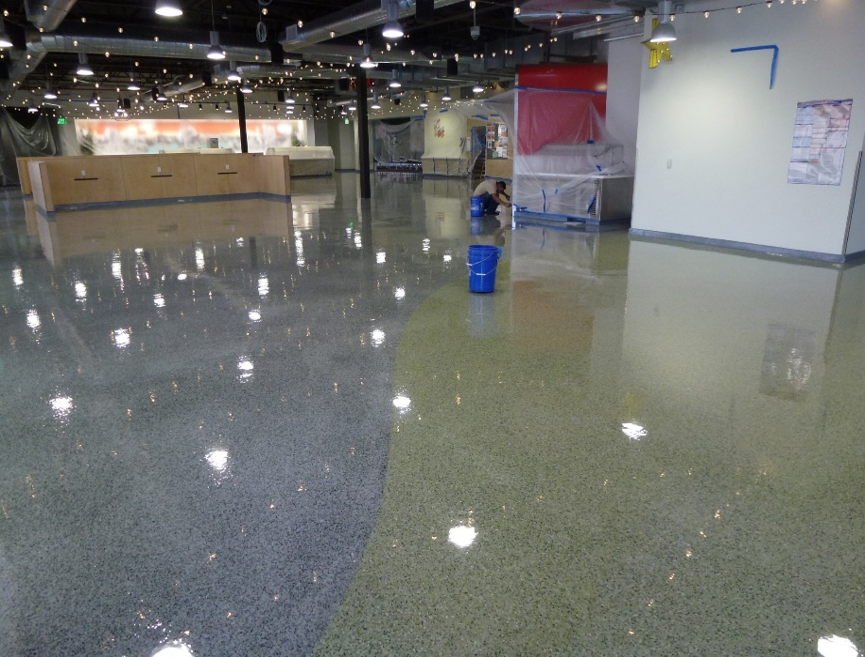
VaporSafeTM, an automated laboratory grade analytical and reporting solution developed by Groundswell Technologies and Hartman Environmental Geoscience, is a near real-time continuous vapor monitoring and response platform capable of tracking chemical concentrations from up to 30 locations as far as 300m from the instrument. This system is used to assess whether vapor intrusion is an issue, determine the vapor composition, distinguish between indoor sources and vapor intrusion, and to quickly identify vapor entry locations. VaporSafe is particularly useful for sites experiencing trichloroethylene (TCE) vapor intrusion concerns because these sites require rapid response to minimize health risks and associated liabilities. Unlike traditional monitoring methods, VaporSafe responds to acute TCE risks within minutes – well before an exposure duration of concern has transpired.
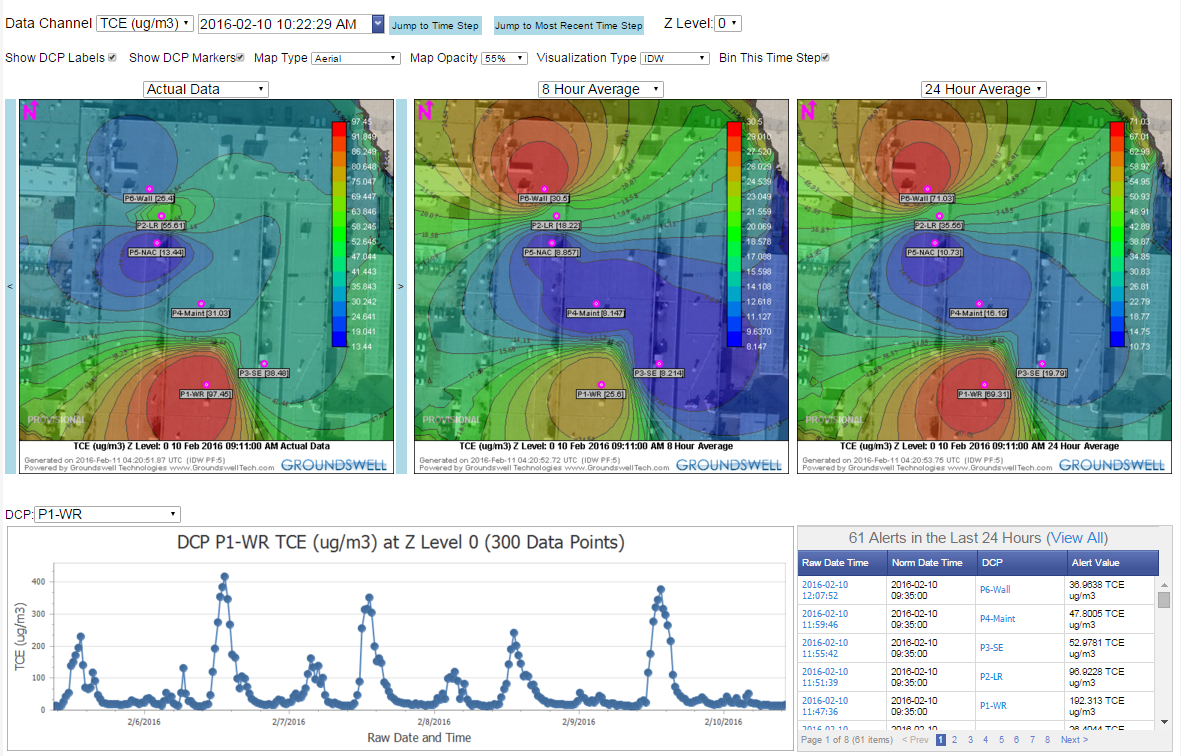
The VaporSafe data patterns enable rapid resolution and advancement to the next step in the site management process. As such, this technology can be integrated into projects during several phases: during initial screening and due diligence efforts; when monitoring to confirm no risk; to rapidly identify vapor entry points; to distinguish between indoor sources and vapor intrusion; to optimize mitigation systems; and to prevent current and future exposures through automated response. Because this technology produces key patterns and correlations within hours, it is also useful for efficiently resolving questions during escrow for property transactions and Brownfield redevelopment efforts. VaporSafe makes it possible to anticipate and correct problems before concentration levels become acute – saving time, money and energy. For more information, go to groundswelltech.com/VaporSafe.
Vapor Intrusion Characterization and Management Solutions: The Case for Continuous Monitoring
Vapor intrusion is challenging to characterize for a multitude of reasons. For example, many cases involve indoor background sources, preferential subsurface migration pathways, shallow subsurface and indoor concentration dynamics, or limitations associated with manual monitoring. Typically, canisters and passive diffusion samplers are used to measure and monitor potential vapor intrusion exposures. Unfortunately, these types of samplers don’t provide sufficient temporal or spatial resolution in dynamic settings. As a result, this method has a propensity to yield false-negative and false-positive results. In addition, the time required to obtain a result is longer than the acute TCE exposure duration of concern, so these options can result in unhealthy exposures and liabilities.
Thanks to technological advances, continuous monitoring platforms are now being used to characterize and monitor vapor intrusion. These platforms are made of multiplexed lab grade analytical components with quality control features to automatically generate geospatial time stamped renderings and time weighted averages through a cloud-based management platform. Continuous monitoring platforms provide auto alerts and responses within one minute of the threshold exceedance detection. Further, these platforms provide superior temporal and spatial resolution based on high frequency repeat analyses from strategic monitoring locations, resulting in an optimized remediation design and unequivocal mitigation system performance confirmation. Blower and HVAC controls can also be engaged automatically when needed.
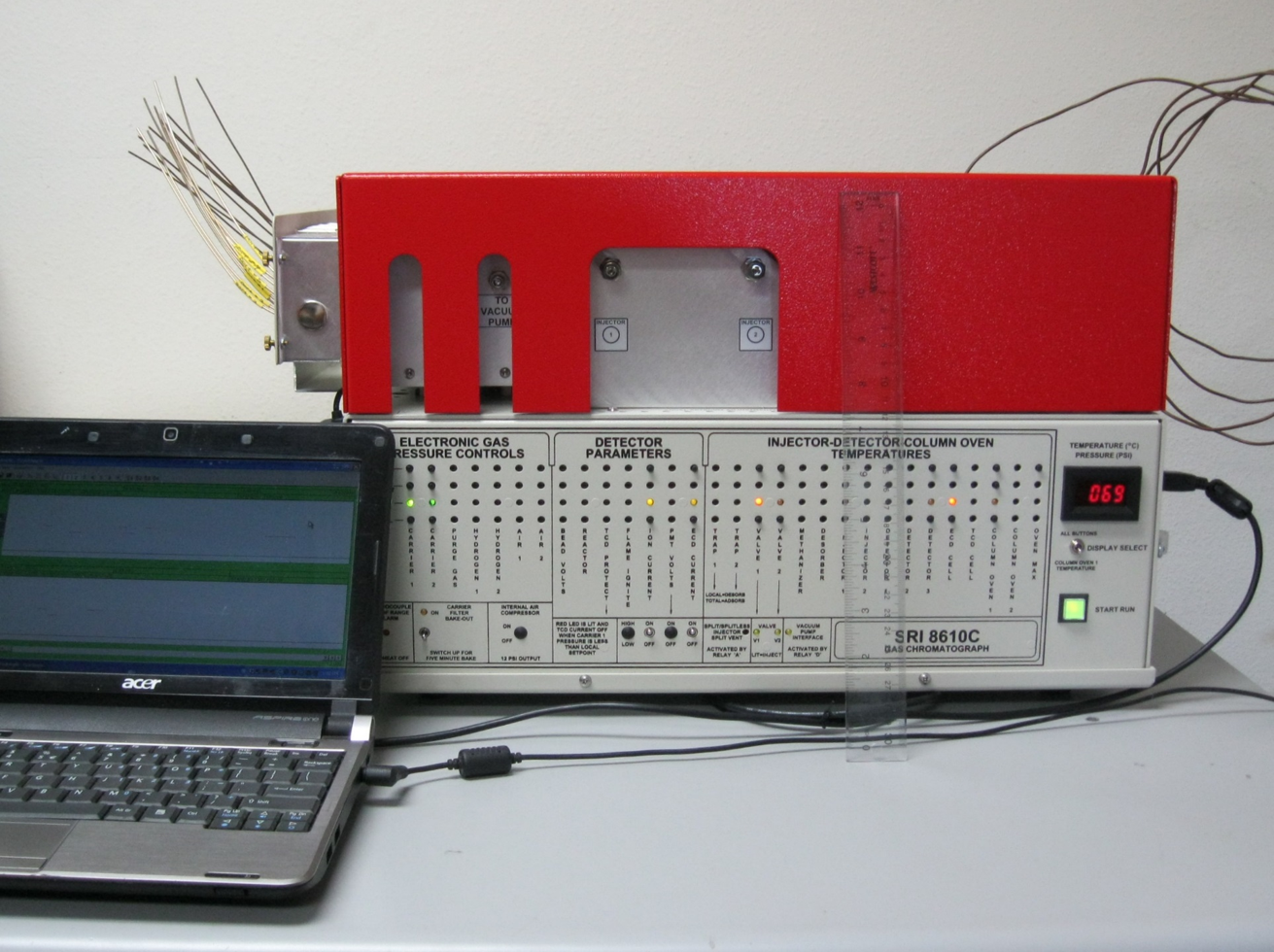
Until a few years ago, cost and instrumentation limitations rendered continuous monitoring systems impractical. Automation and multiplexing now make it possible to perform rapid, cost-effective and continuous assessment and response with a single instrument. For example, a cost comparison analysis of a series of common monitoring scenarios showed that continuous monitoring platforms were cost-competitive when 5 or more locations were being monitored (read the full article here). Automated response capabilities also provide for acute TCE risk prevention, which is not possible with any other monitoring method.
Regulatory support for these platforms has enabled property owners and their consultants to more accurately address potential liabilities, reduce unnecessary remediation costs, produce more effective and surgical remediation strategies, and allow practitioners to most effectively evaluate remediation system performance. More specifically, continuous monitoring allows practitioners to quickly (within a day or two) determine whether vapor intrusion is an issue, and if so, to identify the vapor entry location(s). Once mitigation has been engaged, continuous monitoring is used to confirm that risk reduction objectives have been met. When aggressive remedies such as thermal remediation and oxidation are employed, continuous monitoring is used to assure all stakeholders that fugitive emissions are managed appropriately and to inform site managers when system adjustments are required.
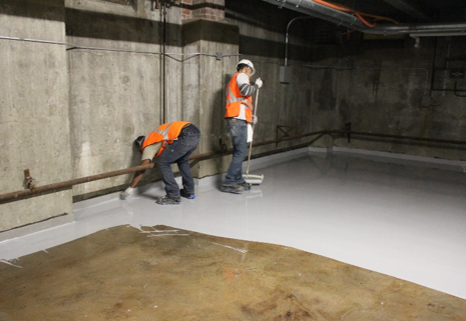
“Any project manager considering using in-situ thermal heating would be well advised to use continuous real-time monitoring of the rapidly changing emission scenario. We have been able to anticipate and correct problems before the concentration levels became acute, which has saved time, money and energy.” – EPA Project Manager
It is clear that many of the difficulties associated with characterizing and managing vapor intrusion can be eliminated with continuous monitoring and response. These systems should therefore be considered by industry practitioners as a cost-effective and viable method for quickly resolving vapor intrusion challenges.
Employee Spotlight: Kim Bradley, Inside Sales Manager
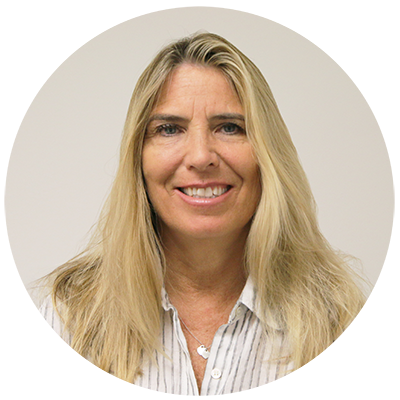 As one who has followed REGENESIS’ growth for many years, joining the company’s Land Science® division as its new Inside Sales Manager was especially gratifying for Kim Bradley. “I have enjoyed watching REGENESIS grow over the last 20 years,” says Bradley. “Over that time, I have seen the company evolve into a leader in remedial technologies for both in-situ remediation and vapor intrusion mitigation. For some time now, I wanted to get back to my environmental roots after focusing on process safety and construction, so joining Land Science® is a natural fit.” In her new role, Bradley will provide technical and project support for vapor intrusion (VI) sites across North America for the company’s technical sales team. In addition, she will also initiate community outreach and education on VI barrier solutions, emerging regulations, and industry best practices by moderating presentations to property owners, developers, architects, environmental firms, and general contractors.
As one who has followed REGENESIS’ growth for many years, joining the company’s Land Science® division as its new Inside Sales Manager was especially gratifying for Kim Bradley. “I have enjoyed watching REGENESIS grow over the last 20 years,” says Bradley. “Over that time, I have seen the company evolve into a leader in remedial technologies for both in-situ remediation and vapor intrusion mitigation. For some time now, I wanted to get back to my environmental roots after focusing on process safety and construction, so joining Land Science® is a natural fit.” In her new role, Bradley will provide technical and project support for vapor intrusion (VI) sites across North America for the company’s technical sales team. In addition, she will also initiate community outreach and education on VI barrier solutions, emerging regulations, and industry best practices by moderating presentations to property owners, developers, architects, environmental firms, and general contractors.
With a background that includes experience in engineering, project management, and business development, Bradley brings an appealing range of expertise to her position, and looks forward to the challenges and rewards ahead. She continues, “I’m excited to work with the various departments at REGENESIS and that I will be interfacing with all divisions.” When asked what her future goals moving forward are with REGENESIS and Land Science®, Bradley stresses the importance of building industry relationships. She continues, “A key priority of mine will be to increase the industry awareness of Land Science and REGENESIS by strategically planning and developing relationships with the top developers, architects, and general contractors.” Developing these all important relationships should come naturally to Bradley, who feels the best aspects of her profession involve, “Collaboration, education, strategic planning, and client relations.” And the most challenging part of her work? “Keeping up with the numerous regulatory agencies’ interpretation of the emerging regulations. Our industry has become heavily regulated, resulting in a variety of potential innovative solutions. It’s been my experience that as long as a regulator sees that you have a plan with a reasonable timeline in place, they will work with you.”
While earning her Bachelor of Science in Civil Engineering from Michigan State University, Bradley enjoyed the environmental course work and became interested in a career in environmental engineering as a way of returning the environment to its natural state so that land can be rejuvenated and utilized again. After graduation she immediately began her career in Southern California as a consultant, project manager, and client advocate in the environmental, process safety and construction arenas.
When asked what she feels the future holds for environmental remediation, she points to the increased attention and emphasis within the regulatory space. She continues, “The regulatory requirements will only become more stringent with time, and I foresee more regulation focused on long-term solutions and more incentives or tax credits made available in exchange for compliance.”
Residing in Laguna Niguel, Bradley is the mother of two children, and in her free time enjoys an array of water sports such as kayaking, white water rafting and boating. She also finds time for alpine skiing, hiking and camping, and is an avid college/professional football, baseball and hockey fan. In her spare time she donates and volunteers for the Alzheimer’s Foundation and to her local Business Development Guild. With regard to our planet and environment, she feels we all have a role to play in sustainability. “Everyone needs to embrace making our environment a healthier place to live, and I’m enjoying the fact that I can potentially make an impact.”
REGENESIS is proud to have Kim Bradley as the new Inside Sales Manager for Land Science®, and looks forward to her leadership and contributions in providing successful remediation outcomes for REGENESIS, Land Science®, and its clients.
What is Vapor Mitigation?
Vapor mitigation is a segment of the environmental industry that is maturing rapidly. There are many new technologies emerging to prevent vapor intrusion which safely and effectively address a variety of structures. Vapor mitigation methods are classified as either passive or active.
Passive vapor mitigation involves barriers installed in existing buildings or pre-construction to prevent the entry of chemical vapors. Passive vapor barriers are installed in a variety of structures including homes, businesses, or other industrial buildings and are generally a cost-effective approach, making passive vapor barriers the most common and appealing method for vapor mitigation. One approach available for existing structures is to seal or fill the cracks in a building’s floor slab or around pipes and utility lines in walls. Retro-Coat™ is an example of a vapor barrier coating system that protects existing structures and can be customizable to fit the unique needs of the structure. Another method of passive mitigation is installing a venting layer in a basement which pushes harmful vapors toward the sides of the building and then outdoors. A third vapor barrier option involves installing a barrier made up of strong plastic-like sheets placed beneath a building’s foundation or in crawl spaces. At Land Science, Geo-Seal® is a safe and proven vapor barrier system comprised of three intensive layers designed and installed in newly constructed buildings. Scientifically tested to provide the highest level of protection from vapor intrusion, Geo-Seal is the trusted source for many environmental professionals and developers across the US and Canada.
Active mitigation is the practice of changing the pressure between the sub-slab and the inside of the building to keep chemical vapors out. This method is considered to be highly effective but is usually more expensive than a passive system due to the high cost of maintenance. A sub-slab depressurization (SSD) system involves the use of a blower or electric fan. A suction pit is installed in the sub-slab allowing for contaminated groundwater vapors to rise to the surface and into the structure. The electric fan or blower draws out the chemical vapors and releases them outside the building’s structure. This system is highly effective and is used for radon and VOC control. Another active mitigation system available involves building pressurization which adjusts a building’s heating, air-conditioning, and ventilation system indoors relative to the pressure in the sub-slab. When positive pressure is introduced inside the building, it prevents chemical vapor from entering the building. This method tends to produce a high energy cost and is considered to be less-effective compared to SSD.
Additionally, there are solutions developed using both passive and active methods. For example, a passive system can be designed to become active if needed and is offered as one of the options available through Land Science. Vapor Vent™ goes above and beyond by providing cost savings, speedy installation, and other performance benefits.
Sources:
–http://www.newmoa.org/cleanup/cwm/vapor/FolkesPresentationApril2006.pdf
–https://nepis.epa.gov/Exe/ZyNET.exe/P100F9XC.TXT
–https://www.trcsolutions.com/writable/images/TRC-white-paper-Vapor-Intrusion-FINAL-March-2016.pdf
Brownfield Developments
Brownfields are a big concern in the U.S. due to the environmental, economic, and political issues they represent. A Brownfield site is a property whose sale or reuse is prevented due to the presence of contaminants or pollutants. While these properties often pose liabilities for the communities they are a part of, they also represent business opportunities for environmental consulting firms and can be a springboard for community redevelopment and economic revitalization because of the EPA’s Brownfields Program.
The US EPA is behind many of the developments concerning Brownfield sites. This US EPA provides grants and technical assistance to communities to assess, safely clean up, and sustainably reuse contaminated properties. The grants make way for ensuring clean air, water, and land preservation and restoration.
A study done in 2015 proves the economic value of cleaning Brownfield properties outlining the benefits to communities and citing positive outcomes like residential property value increasing by up to 15% within 1.5 miles from the affected site. Every year the US EPA assesses its accomplishments among the nation’s communities. The most recent and comprehensive results as of May 1st, 2017 include: 26,722 properties assessed nationwide, 124,760 jobs leveraged from the results, $23.950 BN dollars leveraged, and 67,419 acres anticipated to be ready for use again. These numbers are promising in the developments at Brownfield sites. In Pennsylvania for example, the state received $1.8 million in funding to examine Brownfields. This enacted local organizations to take on many new projects while making significant progress in impacting contaminated sites.
While the benefits of the EPA Brownfields program are clear, challenges remain for property developers and environmental professionals who are tasked with cleaning up and remediating these sites before they are cleared by regulators for re-use. Perhaps most notably, vapor intrusion from soil and groundwater contaminants is often a problem that must be mitigated. As risk standards and other compliance issues associated with contaminant vapor intrusion continually evolve, engineered controls like those offered by Land Science provide a practical, cost-effective solution to eliminate risks.
Recent advances in contaminant vapor intrusion mitigation developed by Land Science have assisted developers, engineering firms, regulators, and land owners by providing technically sound solutions effectively mitigating these issues. These solutions include Geo-Seal Vapor Intrusion Barrier for new building construction, and Retro-Coat Vapor Intrusion Coating for existing structures.
Land Science is a vital part of Brownfield developments in the environmental industry. Land Science contracts with environmental consultants and developers to remediate contaminated Brownfield sites using effective technology and product solutions. There is a lot of value in cleaning up Brownfields that positively affects not only the environment but our economy and communities. Land Science takes pride in Brownfield development efforts nationwide. Most notably, in 2016 Land Science won the Phoenix Award for an impressive brownfield revitalization project. The project was a severely contaminated site that was remediated and redeveloped into the Cardinal Health Center in Michigan. Additionally, Land Science attends Brownfield conferences annually which focus on environmental rejuvenation to stimulate economic activity in contaminated areas.
Sources:
https://www.epa.gov/brownfields
http://news.nationalgeographic.com/2017/03/environmental-protection-agency-budget-cuts/
What is Vapor Intrusion?
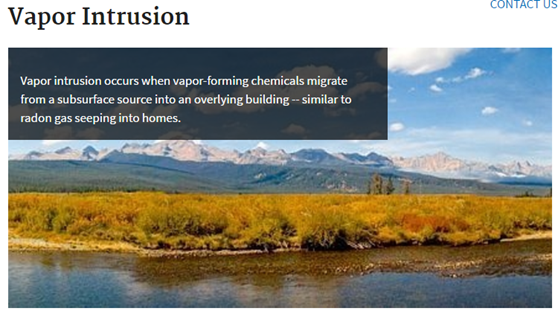
Vapor intrusion (VI) is a relatively new concept in the environmental industry first recognized in the 1980’s. It was discovered that contaminants in the soil and groundwater could be the cause behind poor indoor air quality through the movement of vapors coming up through the ground or slab.
Vapor Intrusion is defined as a process by which chemicals in the soil or groundwater migrate to indoor air above a contaminated site. These chemicals are often known as Volatile Organic Compounds or VOCs. Vapors typically enter a living space through pathways underground in a building’s foundation. These active vapors can pass through cracks in the wall, gaps from utility lines, or even through concrete which is naturally porous.
In extreme cases, the vapors may put humans at risk. If inhaled, those affected could encounter minor health concerns and even long-term effects. The issue of safety is always a concern, since in addition to inhalation of VOCs, these vapors can also become flammable. The degree of the vapors’ impact on human health involves factors that include its chemical concentration, ventilation, and the building’s occupancy.
The US Environmental Protection Agency (US EPA) has put in place measures to manage and eliminate vapor intrusion risks. The Comprehensive Environmental Response, Compensation, and Liability Act (CERCLA) was implemented nationwide and provides a Federal “Superfund” to clean up abandoned sites with pollutants and contaminants. If not administered by a private party, the EPA takes control and mitigates vapor intrusion.
To regulate VI, the EPA has set standards for acceptable indoor air quality levels. Upon determining exposure and risk, there are a variety of mitigation methods to lessen the vapor effects and disturbances. At Land Science, we responded to a need in the industry with an effective and proven solution: an easily installable, effective barrier system to protect against chemicals like PCE, TCE, and Benzene.
Vapor intrusion mitigation may be a newer advancement in environmental technology today, but the Land Science team is staffed with experts from the environmental industry trained and knowledgeable in understanding and providing the highest level of protection to help improve air quality in new and existing structures. As leaders in the field, we are proud to provide the most innovative, groundbreaking, and cost-effective vapor intrusion barrier systems to reduce risk and liability while protecting your clients and their properties from VI exposure. Search our website to find out more.
Client Spotlight: Yen-Vy Van, Senior Hydrogeologist at Maul Foster & Alongi
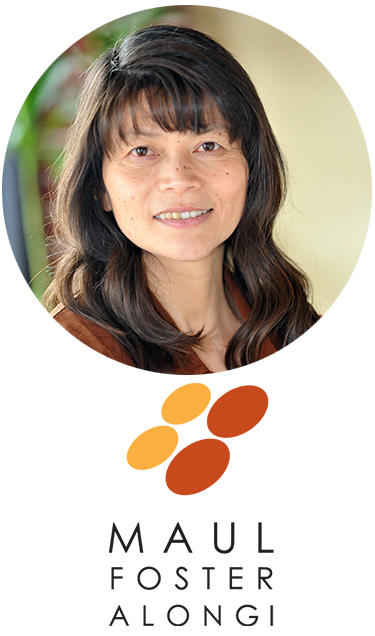 When you ask Yen-Vy Van, Senior Hydrogeologist at Maul Foster & Alongi, Inc. (MFA), about her day-to-day responsibilities, it’s hard to believe that one person could do so much. That’s because her role at Maul Foster & Alongi, Inc., a leading environmental engineering and planning firm in the Pacific Northwest and valued REGENESIS® client, stretches beyond just investigating and remediating impacted sites. From preparing technical documents and reports, to project and client management, to proposal development and other key duties, Van’s involvement seems to touch on nearly every aspect of what MFA does for their clients. Shares Van, “I also manage aspects of client marketing, mentor junior staff members, and conduct field work.” With so many responsibilities, choosing what she enjoys most can be difficult, but a few come readily to mind. Continues Van, “I especially enjoy the technical aspects of my work, such as applying forensic analysis and groundwater modeling of contaminants during remedial investigations to complete a more thorough investigation and understanding of the transport and fate of contaminants impacting the subsurface. I also enjoy the collaborative work we do at MFA – working with and learning from other professionals such as planners, civil engineers, and remediation engineers amongst other specialized professionals.”
When you ask Yen-Vy Van, Senior Hydrogeologist at Maul Foster & Alongi, Inc. (MFA), about her day-to-day responsibilities, it’s hard to believe that one person could do so much. That’s because her role at Maul Foster & Alongi, Inc., a leading environmental engineering and planning firm in the Pacific Northwest and valued REGENESIS® client, stretches beyond just investigating and remediating impacted sites. From preparing technical documents and reports, to project and client management, to proposal development and other key duties, Van’s involvement seems to touch on nearly every aspect of what MFA does for their clients. Shares Van, “I also manage aspects of client marketing, mentor junior staff members, and conduct field work.” With so many responsibilities, choosing what she enjoys most can be difficult, but a few come readily to mind. Continues Van, “I especially enjoy the technical aspects of my work, such as applying forensic analysis and groundwater modeling of contaminants during remedial investigations to complete a more thorough investigation and understanding of the transport and fate of contaminants impacting the subsurface. I also enjoy the collaborative work we do at MFA – working with and learning from other professionals such as planners, civil engineers, and remediation engineers amongst other specialized professionals.”
Choosing Environmental Remediation
Choosing a career in environmental remediation came somewhat naturally to Van, since her interest in groundwater resources began early on with her university studies. “Environmental engineering was a natural segue for me. As a geologist/hydrogeologist, my interests revolved around groundwater resources. The area of environmental remediation of the subsurface is complex and fascinating, and provides the opportunity to rigorously evaluate and investigate the subsurface regime including soils, groundwater, free product, and vapor. Plus, I love scientific investigations, research, technologies, and engineering.”
Van’s university studies include a B.S. from California State University of Long Beach, and a M.S. from California State University of Los Angeles. To stay abreast of the rapid changes in her industry, she enjoys the opportunities to continue technical education in the environmental investigation and remediation fields. These include governmental organizations ranging from the EPA’s CLU-IN and USGS, to professional organizations and remediation experts that include REGENESIS, and others which offer webinars and courses/trainings throughout the year. She goes on to say, “I try to fit them in as often as possible. I believe in staying engaged to continually improve my technical understanding and capabilities.” Living just south of Tacoma, WA, Van works out of MFA’s Seattle office, and travels on an as-needed basis. She also works with the company’s Bellingham, Vancouver, and Portland offices on occasion.
Working with REGENESIS to Ensure Client Success
When asked what she enjoys most about working with REGENESIS, Van points to the high level of technical knowledge she sees from the REGENESIS staff. Says Van, “The REGENESIS technical team is terrific for many reasons. This includes their expertise, versatility, and proven successes. REGENESIS’ technical sales managers understand not only the technical aspects of environmental remediation, but that the various applications have consequential effects on businesses. I also like that REGENESIS factors in the property usage during their remediation design.” In addition, Van appreciates their multifaceted approach. She continues, “The versatility and remedial solutions REGENESIS offers makes them a recognized expert. Also, their tiered approach to targeting the biological and chemical reactions of contaminants and requirements for microbes to aggressively breakdown contaminants has proven to be quite successful.” When it comes to specific REGENESIS products, Van points to a couple in particular. “We’ve had the most success with ORC Advanced® and 3-D Microemulsion®. We’ve been able to obtain the much coveted No Further Action determination from the Washington Department of Ecology for sites where we have applied these amendments. Clients appreciate the minimized disruptions to their properties’ usages. With respect to vapor intrusion issues, we’ve had successes with the installation of Land Science®’s Retro-Coat Vapor Intrusion Barrier System. The mitigation and improvements in indoor air quality that results after the installation of these sealants have enabled our clients to proceed with property transactions. Without these successful mitigation measures, our clients would not have been able to proceed with future transactions on these properties.”
Married for 23 years, Van and her husband have two daughters. “One is a junior at Washington State University and the other is a sophomore in high school. They keep us sane and comically insane at times!” In her free time, she enjoys playing racquetball and competing in regional and local tournaments, and she and the family enjoy backpacking and whitewater rafting. Gardening while listening to baseball games on the radio is another hobby. In her spare time she volunteers at the county’s local library and hopes to get involved in Habitat for Humanity and working with a children organization in the future.
Asked how she would encourage others to join the field of environmental sciences, she concludes by relating how much she enjoyed presenting to her daughter’s elementary and junior high schools. “I’ve presented an hour-long compressed introduction to geology, environmental science, environmental engineering and how these fields apply to our daily lives as well as the exciting projects we engage in” says Van. “The students are usually interested, engaged, and curious. I believe engaging students at these levels is a good start to have them consider the sciences, the environment, engineering, and technologies as potential fields to explore for personal and professional interests.”
REGENESIS is proud to have Yen-Vy Van, Senior Hydrogeologist at Maul Foster & Alongi, Inc., as a valued client, and appreciates her expertise in hydrogeology and environmental engineering, and its impact in providing successful remediation outcomes for REGENESIS and its clients.
Client Spotlight: Bruce Savage, Vice President, Director of Environmental Services at Geotechnical Consultants
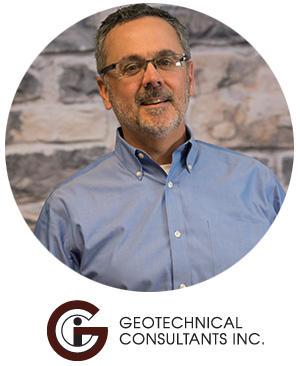 For Bruce Savage, Vice President, Director of Environmental Services at Geotechnical Consultants, Inc. (GCI), a leading full-service, geotechnical engineering and environmental consulting firm, motivation comes easy in fulfilling his day-to-day responsibilities. At GCI, a valued Land Science® client, Bruce enjoys the satisfaction of working with clients to determine where concerns exist, and then develops and implements workable, cost-effective remedies that satisfy all parties. He achieves optimum results by working closely with real estate developers, property owners, their business partners and regulatory personnel to identify environmental contamination and the appropriate steps to remedy contamination. Shares Savage, “The goal is always to identify workable pathways to development using remedies that protect human health and the environment, meet regulatory requirements, and ensure future compliance and protectiveness.”
For Bruce Savage, Vice President, Director of Environmental Services at Geotechnical Consultants, Inc. (GCI), a leading full-service, geotechnical engineering and environmental consulting firm, motivation comes easy in fulfilling his day-to-day responsibilities. At GCI, a valued Land Science® client, Bruce enjoys the satisfaction of working with clients to determine where concerns exist, and then develops and implements workable, cost-effective remedies that satisfy all parties. He achieves optimum results by working closely with real estate developers, property owners, their business partners and regulatory personnel to identify environmental contamination and the appropriate steps to remedy contamination. Shares Savage, “The goal is always to identify workable pathways to development using remedies that protect human health and the environment, meet regulatory requirements, and ensure future compliance and protectiveness.”
The path to a career in remediation
Savage’s path to his current position as Vice President, Director of Environmental Services began with his Bachelor of Science in Geology and Mineralogy from The Ohio State University. He followed that up with his Master’s in Geological and Earth Sciences/Geosciences from the University of Cincinnati. His academic achievements led to work experience as a field technician and a driller’s helper with GCI, nearly 30 years ago, then as an environmental geologist, prior to being promoted to Vice President. In addition, Savage received the Certified Professional designation from the Ohio EPA in 2003. When asked about how he initially chose a career in environmental remediation, he admits that in some ways, his career chose him. Continues Savage, “The truth is, this career found me. I was fortunate enough to have the right training at the right time, and be in the right place. Central Ohio has seen an amazing amount of urban revitalization in recent years, and GCI has experienced much of that work.” When asked what he enjoys most about his work, he points to the sense of being a difference-maker within his community and surrounding area. “The best part of my job,” he says, “Is working on and seeing new development projects and historic preservation happening all around Columbus.” And the biggest challenge? “Keeping up with project schedules!”
Residing in German Village, a historic district in Columbus, and a short drive to the GCI offices in Westerville, Ohio (just outside Columbus), Savage enjoys a close association with Land Science® employees, and is a strong advocate of its products as well. “Land Science® has consistently provided timely, effective remediation product solutions,” continues Savage. “For the most part, we use Geo-Seal® and Vapor Vent™, due to the fact that most of our sites are urban redevelopment projects where Vapor Intrusion (VI) is a concern. We recommended installation of a VI mitigation system at a former manufacturing site being redeveloped for apartments, and the owner selected the Geo-Seal® and Vapor Vent™ system. The remedy installation aided in the project receiving a Covenant Not to Sue from the Ohio EPA following our submittal of a No Further Action Letter,” Shares Savage. He continues, “In another instance, we recommended a floor sealing system for VI, and the owner selected the Retro-Coat™ system. At that site, indoor air contaminant concentrations were either eliminated or significantly reduced.”
Keeping pace with the vapor intrusion industry
To keep pace with the ever changing environmental remediation industry, particularly with regard to vapor intrusion, Savage regularly attends Ohio EPA-sponsored courses, and participates in webinars. Says Savage, “Ohio requires its VAP Certified Professionals to receive at least 12 hours of approved continuing education annually.” When it comes to identifying trends within the industry, he points to what he sees as a continued movement toward urban revitalization. “This will require creative solutions for soil, groundwater and vapor intrusion mitigation,” he says. “The vapor intrusion to indoor air pathways is receiving significant attention from the business and regulatory communities, and VI mitigation installations are becoming more and more common.” And as for what the future may hold for Geotechnical Consultants, Inc., he goes on to say it’s about service and solutions. “GCI’s philosophy has always been: provide our clients with great service and practical solutions for a reasonable fee, and in addition, provide our staff with personal and professional growth opportunities.”
Married for 35 years, Savage and his wife have three children and two grandchildren who “we enjoy spoiling.” When he has time away from his busy work schedule he enjoys learning about history and studying viniculture. He also manages to find time to serve as a Stephen Minister through his church, while supporting Gracehaven, The James Cancer Hospital, and other charities.
Change is inevitable
Since he works in such a fast-paced, industry, Savage realizes that change is inevitable, and says that over the past few decades he’s noticed a much higher degree of professionalism in environmental remediation. He concludes, “Since the 1980s the environmental consulting industry has gone from what I would call a sort of “garage-band” field, to a much more sophisticated group of professionals working on solutions to complex human health and regulatory issues.”
Land Science® is proud to have Bruce Savage, Vice President and Director of Environmental Services at Geotechnical Consultants Inc., as a valued client and partner in environmental remediation, and appreciates his vast knowledge and experience in providing successful remediation outcomes for Land Science® and its clients.


